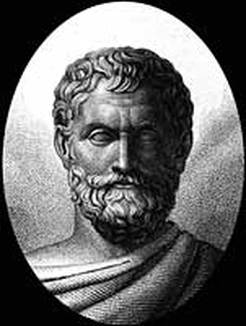Science is a progressive endeavor. Our present knowledge of the world is founded on the speculations and introspections of our ancestors in a time when science was not just a field of study but an integral philosophy of life.
As far as the ancients were led to believe, humanity was a mote of dust in the cosmic theater of the gods. The ancients did not have the tools of the modern era but there was an endless desire to correlate their observations of the material world with the innate human experience. Many men and women embarked on this journey. On several occasions, they stumbled and met multiple dead ends, but in their curious observations, deductions, and measurements they built the foundations of modern science.
The world, back then, was a lot smaller. But then, in the third century B.C., along came a man named Eratosthenes. A Greek polymath, Eratosthenes dabbled in everything from astronomy, mathematics, philosophy, geography, poetry, music, and even theater. He was a man devoted to knowledge and was also the chief librarian of the Library of Alexandria in Egypt. [1]

Eratosthenes learned of a unique phenomenon at the outpost of Syene where on the summer solstice, the longest day of the year, the shadows of temples gradually grew shorter until at noon, they cast none. The sun was directly overhead and at noon its rays would penetrate straight down the city center’s well where upon the watery surface its dazzling reflection could be seen. Eratosthenes couldn’t help but wonder, “What happened to the shadows?” and in pursuit of an answer to this question, he would deduce the span of the entire world through the simplest of observations in the shadows of inanimate rods.
Eratosthenes would detail his methodology in a book entitled On the Measure of the Earth.1 [2] It was in this book that “the world was grasped.”[3] Eratosthenes observed that on the precise moment when the pillars (or any vertically standing stick for that matter) on Syene cast no shadow near noon on the summer solstice, sticks and pillars in Alexandria continued to cast pronounced shadows. How could this be?
Eratosthenes argued that provided the Earth is flat, it could make sense that the two sticks at a given moment would cast no shadow (the Sun would be at zenith or directly overhead) or shadows of equal length (the Sun’s rays would be incident at the same angle upon the two sticks). In rectifying his observations with his deductions, Eratosthenes recognized that the only possibility for the existence of a shadow in Alexandria at the same instant there was none in Syene is that the surface of the Earth is curved.
The greater the curvature of the surface, the greater the difference in shadow lengths. Assuming the Sun was so far away that its rays were parallel upon reaching the Earth’s surface, Eratosthenes conjectured that sticks placed at different angles to the Sun’s rays would cast shadows of different lengths. For the observed difference in shadow lengths for sticks placed in Alexandria and Syene, on the summer solstice at noon, he measured the angle of elevation of the Sun’s rays which he claimed to be seven degrees. The distance between Alexandria and Syene thus had to be an equivalent of seven degrees along the curvature of the Earth’s surface. Seven degrees amounts to 1/50th of three hundred and sixty degrees, the full circumference of the Earth, assuming the Earth was spherical.

With the assistance of professional bematists, personnel whose job was to precisely measure the extent of Egypt’s territory for agricultural and taxation purposes, Eratosthenes then led several surveying trips in measuring the exact distance between Alexandria and Syene. He would find that the distance between the two cities was 5000 stadia or 800 km (now the equivalent of seven degrees). Therefore, the circumference of the Earth (3600) would be 800 km multiplied 50 times. That is 250,000 stadia or 40,000 kilometers.2 This is the right answer. With just a penchant for observation, the most basic tools, and some clever assumptions, Eratosthenes became the first person to accurately measure the size of a planet.

Over the course of his life, Eratosthenes would write many books in geography (Geography, On the measure of the Earth), philosophy (Platonikus, On Freedom from Pain), and even poetry (Hermes, Erigone). [4] After the destruction of the Library of Alexandria, only fragments of his works remain. Apart from his discovery of the circumference of the Earth, Eratosthenes contributed heavily to the study of geography, introducing some of the terminology still used to date, [5] and on separate occasions also accurately calculated the tilt of the Earth’s axis, and the distance from the Earth to the Sun. [6]
Crassly identified as “Beta” by envious contemporaries, Eratosthenes was in contrary a true polymath whose experiments and contributions have been invaluable to the growth of various scientific fields, and serve as wonderful examples of the scientific method at work.
1 The book, in reality, was not preserved, and Eratosthenes’ method to calculate the Earth’s circumference was lost in the annals of time; what was preserved was the simplified version of Eratosthenes’ calculations popularized by a fellow Greek astronomer and science historian, Cleomedes. [7]
2 More precisely, 1 Egyptian stadium is equal to 157.5 meters. So, Eratosthenes’ actual calculation came to around 39,375 km which is 1.4% of the real value 39, 941 km.
References
[1] Dicks, D.R. “Eratosthenes”, in Complete Dictionary of Scientific Biography. New York: Charles Scribner’s Sons, 1971.
[2] Russo, Lucio (2004). The Forgotten Revolution. Berlin: Springer. p. 68.
[3] Pliny, Naturalis Historia, XII.
[4] Chambers, James T. “Eratosthenes of Cyrene.” in Dictionary Of World Biography: The Ancient World.
[5] Roller, Duane W. Eratosthenes’ Geography. New Jersey: Princeton University Press, 2010.
[6] Alfred, Randy. “June 19, 240 B.C.: The Earth is Round, and It’s This Big”. Wired.
[7] Cleomedes, Caelestia, i.7.49–52.

One thought on “Ancient Scientists – Chapter 1: Eratosthenes”